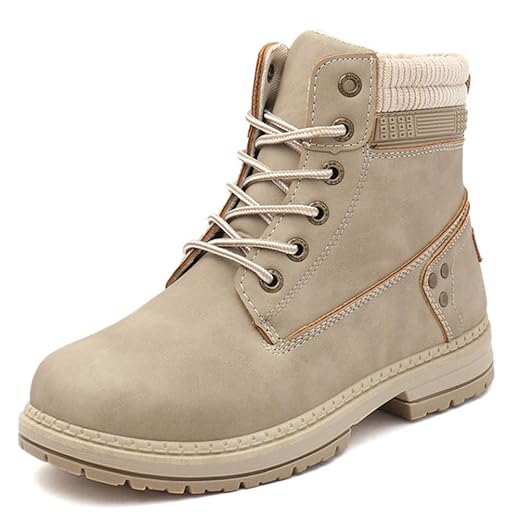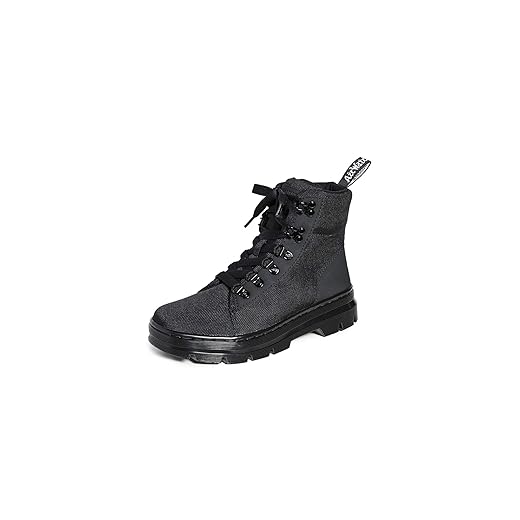Women’s work boots are specifically designed footwear intended to provide comfort, support, and protection for women engaged in various occupations and work environments. These boots are crafted with features that cater to the unique needs and anatomical differences of women’s feet, ensuring both functionality and style. Women’s work boots are available in a range of designs to accommodate different job requirements, from construction and industrial settings to healthcare and service industries.
What is the difference between men’s and women’s work boots?
The main differences between men’s and women’s work boots lie in their design, sizing, and sometimes, specific features tailored to the anatomical differences between men’s and women’s feet. Here are some key distinctions:
- Sizing and Fit:
- Women’s work boots are generally designed with a narrower heel and a broader forefoot to accommodate the typical shape of women’s feet. They also come in smaller sizes to cater to the sizing needs of women.
- Men’s work boots are crafted with a wider heel and a more generous width in the forefoot to suit the broader structure of men’s feet.
- Style and Aesthetics:
- Women’s work boots often feature designs and color options that are more feminine, with considerations for style and aesthetics. This includes variations in the use of colors, patterns, and materials to appeal to a women’s fashion preferences.
- Men’s work boots typically have more neutral and traditional designs, reflecting a more utilitarian approach without as much emphasis on fashion-forward elements.
- Safety Features:
- Both men’s and women’s work boots may have similar safety features, such as steel or composite toe caps, slip-resistant outsoles, and electrical hazard protection. The specific design and arrangement of these features may be adjusted to suit the typical foot shape of each gender.
- Sizing Conversion:
- In some cases, the sizing of work boots may be labeled differently for men and women, even if the actual size is the same. For example, a women’s size 8 may be equivalent to a men’s size 6.
- Durability and Construction:
- The durability and construction of work boots, in terms of materials used and overall sturdiness, are generally similar for both men’s and women’s versions. Both are designed to withstand the demands of specific work environments.
- Specific Women’s Features:
- Some women’s work boots may incorporate additional features such as antimicrobial linings, cushioning designed for women’s foot contours, or softer materials for added comfort.
It’s important to note that not all work boots are strictly gender-specific. Some unisex or gender-neutral options exist, and the choice between men’s and women’s work boots often comes down to individual fit preferences and styling. When selecting work boots, it’s essential for individuals to prioritize comfort, safety features, and the specific requirements of their job, regardless of whether the boots are labeled for men or women.
How to choose the best women’s work boots
- Safety Features: Many women’s work boots come with safety features such as steel or composite toe caps for protection against impact and compression. They may also include slip-resistant outsoles for stability on various surfaces.
- Comfort Technology: Work boots for women often incorporate comfort technologies such as cushioned insoles, arch support, and shock-absorbing midsoles to enhance overall comfort during long hours of standing or walking.
- Durability: High-quality materials and durable construction ensure that women’s work boots withstand the rigors of different work environments. This includes resistance to abrasions, chemicals, and other workplace hazards.
- Waterproofing: Some work boots for women are designed to be waterproof, providing protection against moisture and keeping feet dry in wet conditions.
- Breathability: Work boots may feature breathable linings and materials to promote air circulation, preventing excessive sweating and maintaining a comfortable foot temperature.
- Style Options: Women’s work boots come in various styles, catering to different preferences and dress codes. From traditional lace-up boots to more casual or athletic-inspired designs, women can find work boots that suit their personal style.
- Lightweight Construction: Many modern women’s work boots prioritize lightweight materials and construction without compromising durability. This is especially important for occupations that require agility and mobility.
- Electrical Hazard Protection: Work boots designed for electrical hazard protection have features to reduce the risk of electrical shocks in specific work environments.
- Antimicrobial Properties: Some work boots incorporate antimicrobial treatments to help control odor and maintain foot hygiene, making them suitable for extended wear.
When choosing women’s work boots, it’s crucial to consider the specific requirements of the job and any safety standards in place. Additionally, individual preferences, foot shape, and sizing should be taken into account to ensure a comfortable and protective fit. Women’s work boots play a vital role in promoting safety, comfort, and well-being for women across various professional fields.
Products recommended in the post contain affiliate links. We may receive a commission when you buy something through our posts.
Why Trust Us
You will find what you are looking for at Black Friday Weeks. From classic to luxury brands, you'll find both. We will help you to select appliances that fit your needs, budget and lifestyle. Whether you want to stop by to learn more — or plan to make a major purchase — we’ll treat you like family and assist you every step of the way. Shop with us today to receive friendly and experienced help along the way.







